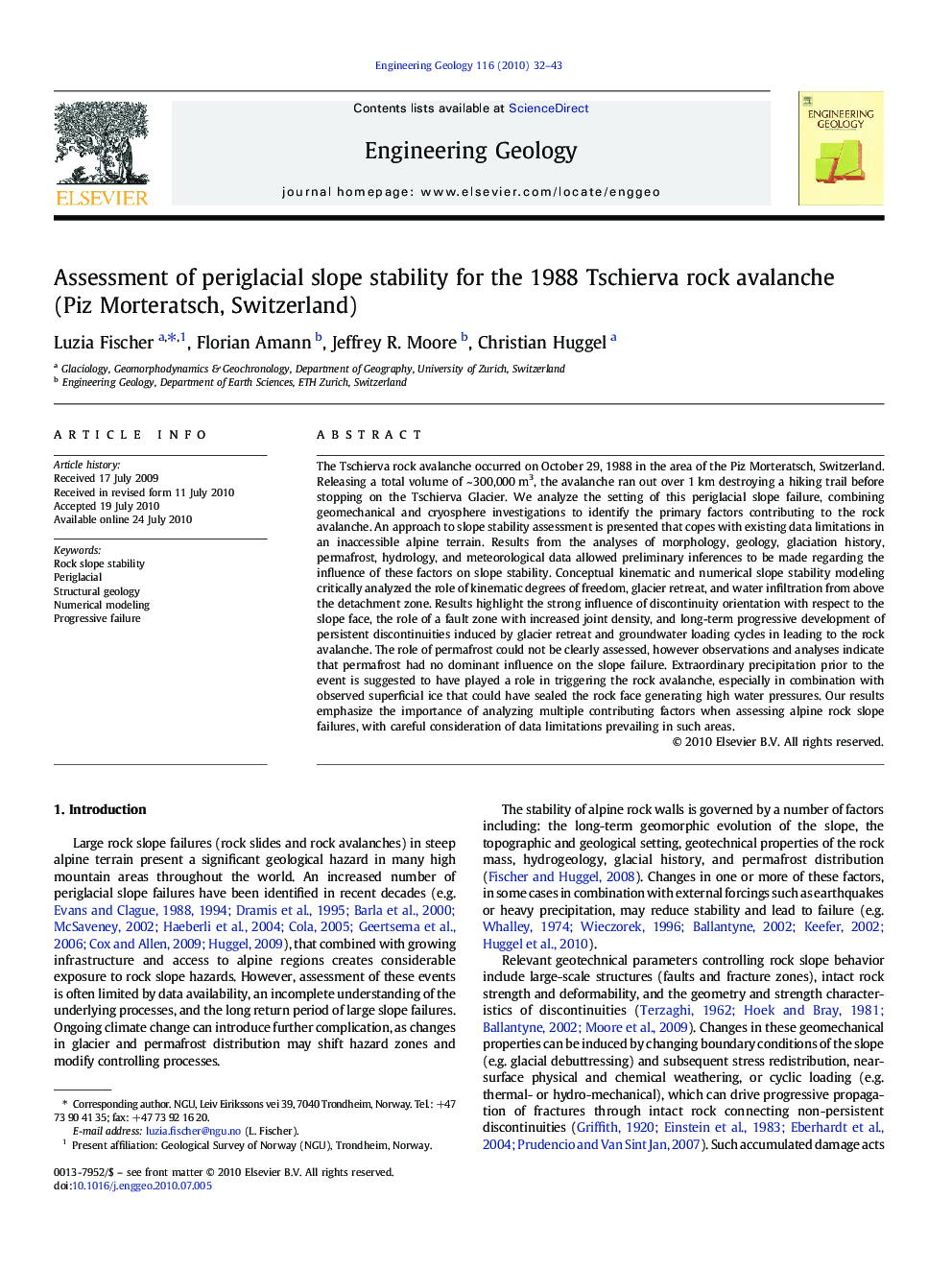| کد مقاله | کد نشریه | سال انتشار | مقاله انگلیسی | نسخه تمام متن |
|---|---|---|---|---|
| 4744464 | 1641862 | 2010 | 12 صفحه PDF | دانلود رایگان |

The Tschierva rock avalanche occurred on October 29, 1988 in the area of the Piz Morteratsch, Switzerland. Releasing a total volume of ~ 300,000 m3, the avalanche ran out over 1 km destroying a hiking trail before stopping on the Tschierva Glacier. We analyze the setting of this periglacial slope failure, combining geomechanical and cryosphere investigations to identify the primary factors contributing to the rock avalanche. An approach to slope stability assessment is presented that copes with existing data limitations in an inaccessible alpine terrain. Results from the analyses of morphology, geology, glaciation history, permafrost, hydrology, and meteorological data allowed preliminary inferences to be made regarding the influence of these factors on slope stability. Conceptual kinematic and numerical slope stability modeling critically analyzed the role of kinematic degrees of freedom, glacier retreat, and water infiltration from above the detachment zone. Results highlight the strong influence of discontinuity orientation with respect to the slope face, the role of a fault zone with increased joint density, and long-term progressive development of persistent discontinuities induced by glacier retreat and groundwater loading cycles in leading to the rock avalanche. The role of permafrost could not be clearly assessed, however observations and analyses indicate that permafrost had no dominant influence on the slope failure. Extraordinary precipitation prior to the event is suggested to have played a role in triggering the rock avalanche, especially in combination with observed superficial ice that could have sealed the rock face generating high water pressures. Our results emphasize the importance of analyzing multiple contributing factors when assessing alpine rock slope failures, with careful consideration of data limitations prevailing in such areas.
Journal: Engineering Geology - Volume 116, Issues 1–2, 27 October 2010, Pages 32–43